Phonics Teaching Resources
Make teaching phonics easy with printable phonics worksheets, activities, games and more designed for primary teachers.
This collection of Australian curriculum-aligned teaching resources has been carefully reviewed by our expert teaching team to make sure every resource is classroom-ready — so we can make your lesson planning easier!
New to teaching phonics, or just looking for new ways to engage your students? Read on for a primer from our teacher team!
What Is Phonics?
You've likely heard the word 'phonics' thousands of times throughout your own education and maybe on one of those old as from the '90s. But what is phonics, exactly?
Phonics is technically defined as the systematic instruction of the relationships between letters and sounds in written language. But that's a mouthful, isn't it? More simply, phonics is the word we use to refer to the method of teaching reading by focusing on the relationship between written letters and the sounds they represent.
In phonics, kids learn how to decode written words by recognising the sound-symbol correspondence.
Phonics vs. Phonemic Awareness
When we start talking about letters and their sounds, we start to wander into phonemic awareness territory. So what's the difference?
The words phonics and phonemic are similar, and the two concepts are — surprise, surprise — related. But there are key differences.
Phonemic awareness is essentially the ability to identify and manipulate individual sounds — aka phonemes — in spoken language. It's those individual sounds and their correspondence to the letter symbols that can be used by kids to then decode written words.
So students learn to recognise the individual sounds of spoken language (phonemes) and how these sounds can be represented by letters (graphemes) in written language. Then they apply this knowledge to decode written words by understanding the sound-symbol correspondence.
Consider this example:
- Let's say your student can identify the separate sounds in a spoken word such as 'cat' (i.e., /k/ /a/ /t/). That's phonemic awareness.
- Now let's say you're teaching that same student that the letter 'c' represents the /k/ sound and that the letter 'a' represents the /a/ sound, and that these sounds combine to form the word 'cat.' That's phonics!
How to Teach Phonics in Primary School
OK, you probably already know that phonics is all about teaching word recognition via grapheme-phoneme associations and letter-sound correspondences.
It’s a means of teaching early readers the pieces that make up a word so they can blend them together to decode the English language as readers and writers.
But how do you teach it?
In the earliest stages, phonics instruction typically begins with teaching students the most common letter-sound relationships. You start with consonants, then move on to vowels, then consonant blends.
Students then learn to sound out words by decoding the letters and blending the sounds together to form words.

Phonics Vocabulary Terms to Remember
The English language system is one of the hardest to teach and learn, so how do you teach phonics? Let’s start with the phonics vocabulary.
- For starters, there are 26 letters that create approximately 44 phonemes, the word for the individual speech sounds that make up words. Put together, phonemes make words. OK, easy enough, right?
- Well, these phonemes can be written in more than 200 different letter combinations, known as graphemes. Graphemes can be made up of 1 letter (such as 'p' in 'pig'), 2 letters (such as 'gh' in ghost), 3 letters (such as 'igh' in night), or 4 letters (such as 'ough' in rough).
- Then there are digraphs or two letters that work together to make one sound — such as “ph” in graph. But wait, isn’t that a grapheme? Yup, a digraph is a type of grapheme.
- So is a trigraph, trigraphs, aka three letters that work together to make one sound, such as 'dge' in edge.
- And if you’re teaching phonics, you can’t forget dipthongs, the name for a sound that is formed by the combination of two vowels in a single syllable, such as 'ou' in loud.
Most students will spend foundation, year 1 and even year 2 getting a handle on all phonics elements!
- Plus Plan
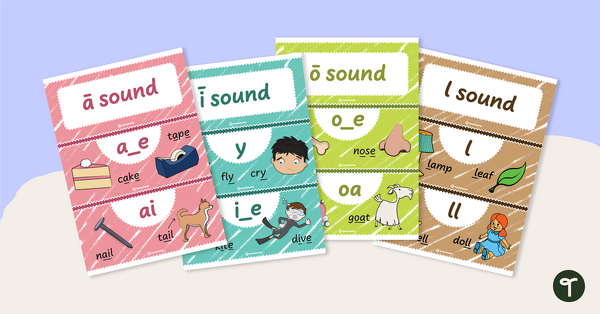
Phonics Sound Wall Display
Build a classroom sound wall to match your phonics programs and literacy progressions with a printable sound wall display.
- Plus Plan

Science of Reading Group Folder Templates
Stay organised with these versatile Science of Reading Group Folder Templates, designed to offer plenty of options.
- Plus Plan
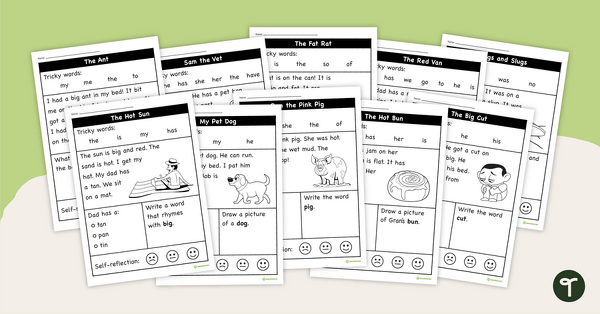
Decodable Text Worksheets - Single Graphemes (Set 1)
A set of 10 decodable text worksheets for early readers.
- Plus Plan
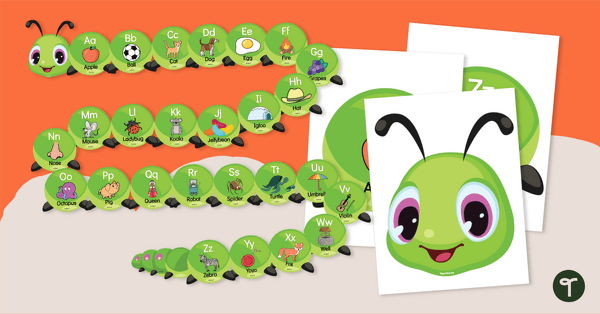
Caterpillar Alphabet Line - Editable Display
Display the alphabet in your classroom using a Caterpillar Alphabet Line.
- Free Plan
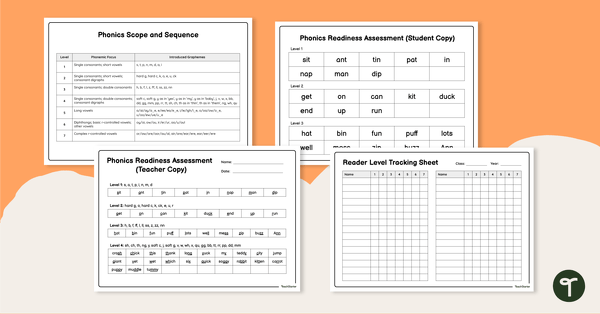
Decodable Readers Teacher Support Pack
A set of free supplementary resources to support the implementation of Teach Starter’s series of phonics-based decodable readers.
- Plus Plan
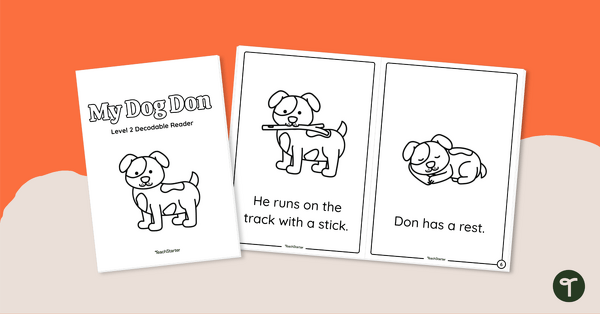
My Dog Don - Decodable Reader (Level 2)
Develop confident, successful readers with this phonics-based, printable decodable book.
- Plus Plan
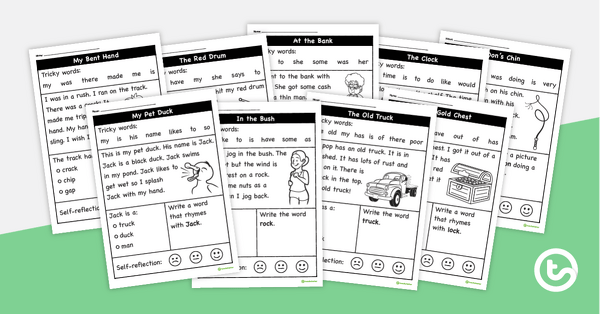
Decodable Text Worksheets – Common Consonant Digraphs (Set 2)
A set of 10 decodable text worksheets for early readers.
- Plus Plan
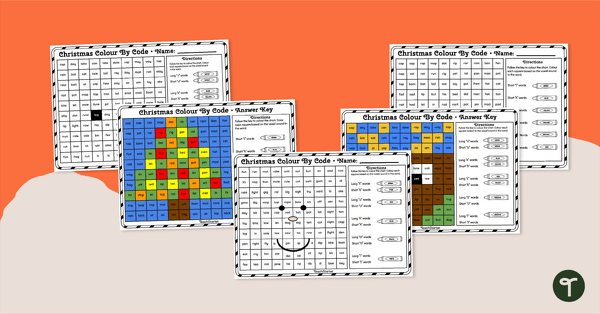
Christmas Colour by Vowel Sound Worksheets
Use colour by vowel sound worksheets for a bit of Christmas fun in the classroom.
- Free Plan

Initial Sound Peg Cards (Version 1)
An initial sound and fine motor activity for the early years classroom.
- Plus Plan
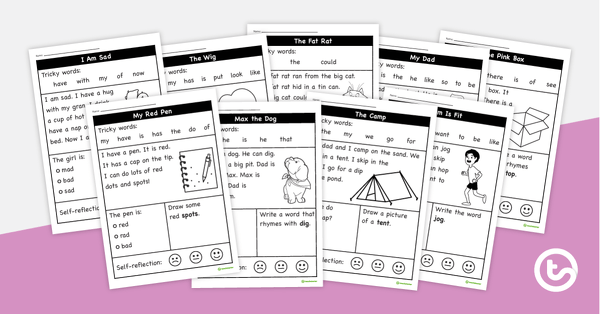
Decodable Text Worksheets – Single Graphemes (Set 2)
A set of 10 decodable text worksheets for early readers.
- Plus Plan
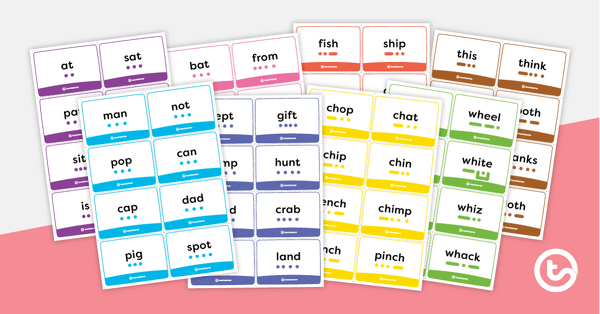
Decodable Sound Button Flashcards – Set 1
A set of over 100 decodable sound button flashcards.
- Free Plan

Alphabet Sounds Puzzle
Dive into letter-sound correspondence with your students using this alphabet sounds puzzle.
- Plus Plan
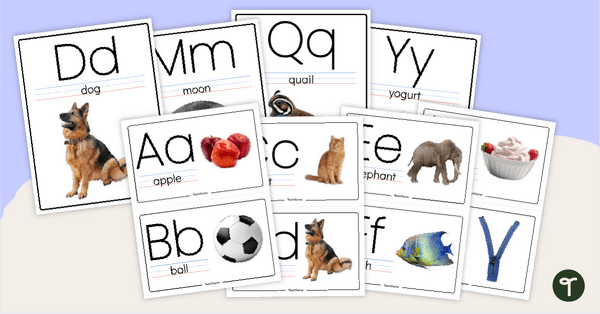
Ink-Friendly Classroom Alphabet Display
Print and hang your own classroom alphabet posters with printable upper and lowercase letter posters with real-world images.
- Plus Plan

Alphabet Letter-Sound Assessment Pack
Assess your students abilities to write their names, identify letters, letter sounds, and initial/middle/ending sounds with a printable alphabet assessment pack.
- Plus Plan
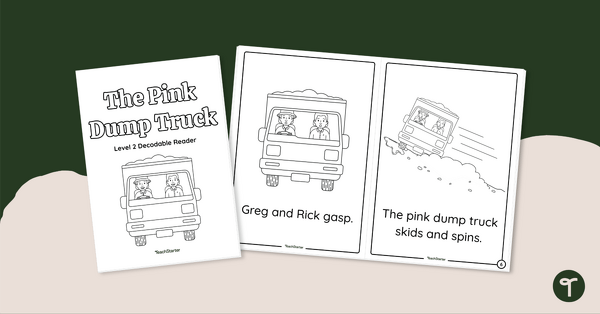
The Pink Dump Truck - Decodable Reader (Level 2)
Develop confident, successful readers with this phonics-based, printable decodable book.
- Plus Plan
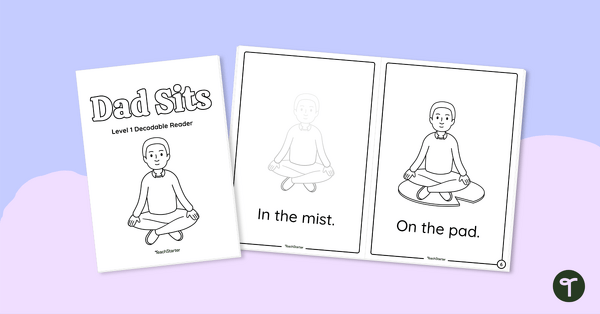
Dad Sits - Decodable Reader (Level 1)
Develop confident, successful readers with this phonics-based, printable decodable book.
- Plus Plan
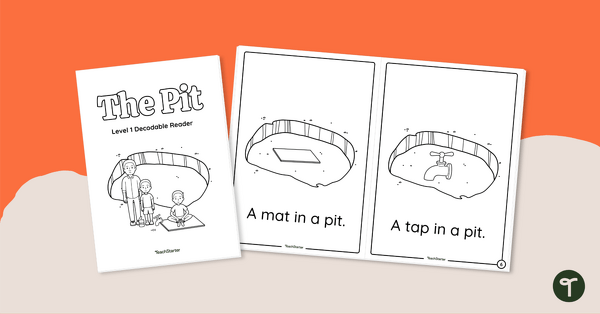
The Pit - Decodable Reader (Level 1)
Develop confident, successful readers with this phonics-based, printable decodable book.
- Plus Plan
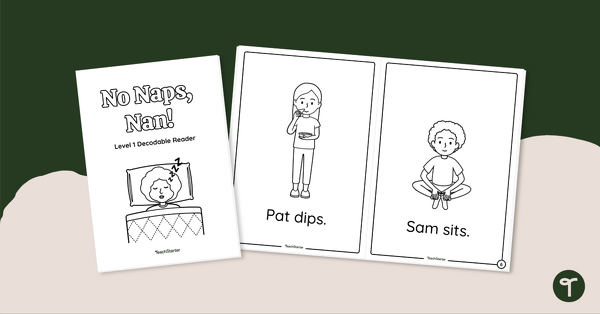
No Naps, Nan! - Decodable Reader (Level 1)
Develop confident, successful readers with this phonics-based, printable decodable book.
- Plus Plan
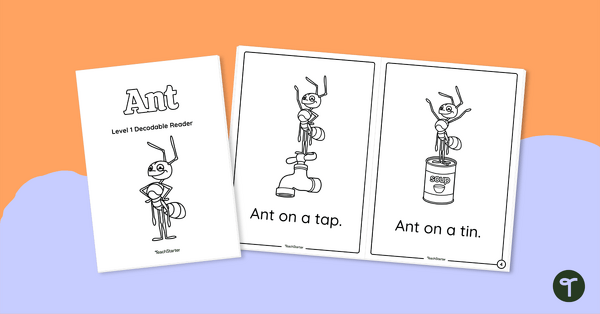
Ant - Decodable Reader (Level 1)
Develop confident, successful readers with this phonics-based, printable decodable book.
- Plus Plan
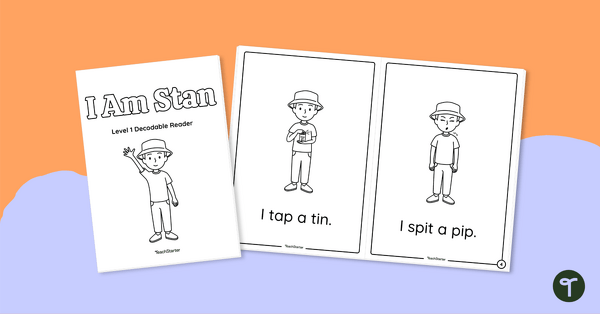
I Am Stan - Decodable Reader (Level 1)
Develop confident, successful readers with this phonics-based, printable decodable book.
- Free Plan
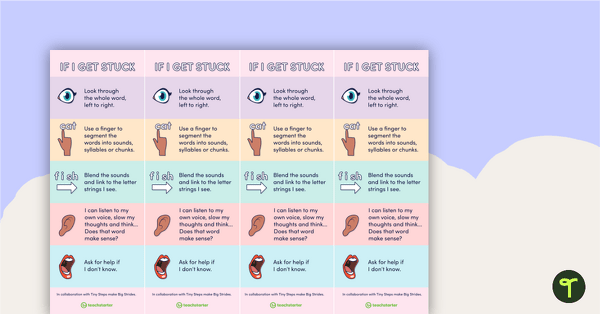
Science of Reading Decoding Strategy Bookmarks and Poster
A decoding strategy bookmark and poster set to help students during reading.
- Plus Plan
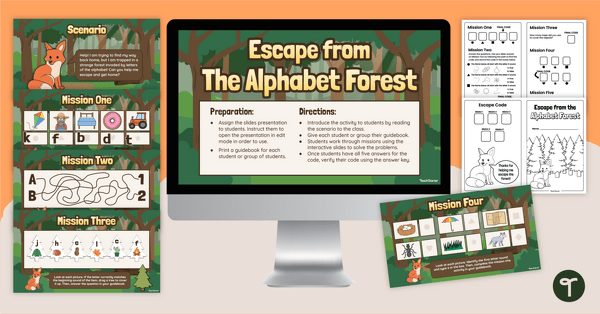
Digital Escape Room for Kids - Alphabet Sounds
Explore the letters of the alphabet and their main sounds using this fun digital escape room for kids.
- Plus Plan
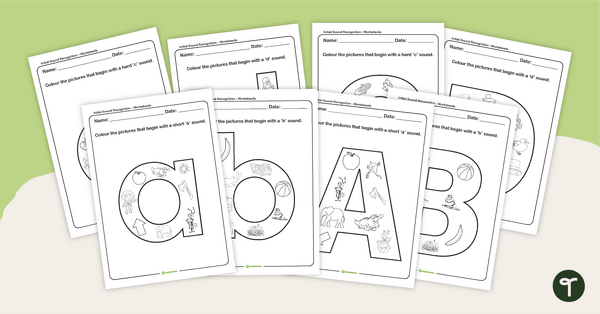
Alphabet Sounds Worksheets
Explore alphabet beginning sounds with this set of alphabet sounds worksheets to develop letter recognition.
- Plus Plan

Letter Sounds Matching Game - Parking Lot
Practise applying letter-sound correspondence with this set of upper and lowercase letter cards and matching game boards.
- Plus Plan
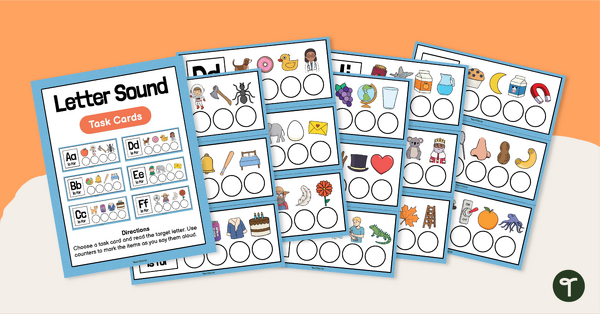
Letter Sound Recognition Activity Task Cards
Explore letter sound recognition knowledge with your students using this set of letter sound activity cards.
- Plus Plan
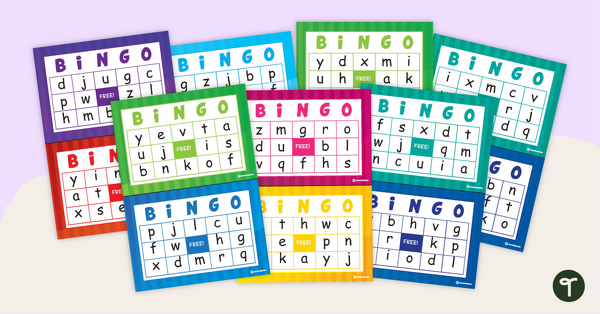
Alphabet Bingo Upper and Lowercase Recognition
Give students the opportunity to practise the recognition of lowercase and uppercase letters with this set of alphabet bingo cards.
- Free Plan
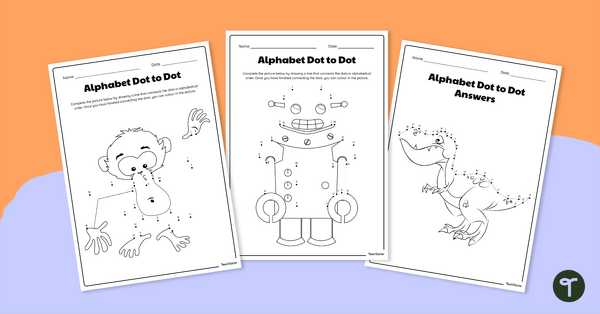
Dot-to-Dot Alphabet Worksheets
Use this set of 3 dot-to-dot worksheets to get your youngest students practising their recognition of the alphabet.
- Plus Plan
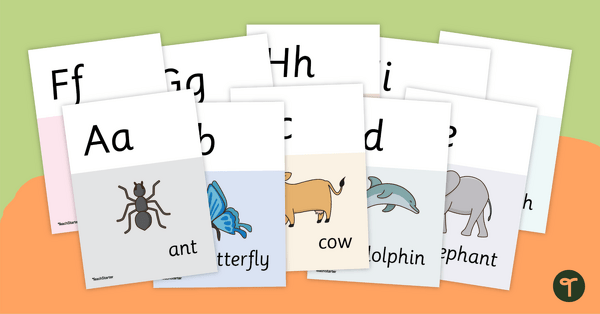
Animal Alphabet Display Posters
An A to Z of animals in 26 vibrant posters.
- Plus Plan
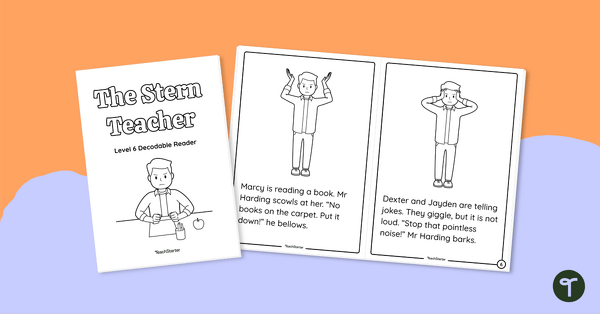
The Stern Teacher - Decodable Reader (Level 6)
Develop confident, successful readers with this phonics-based, printable decodable book.
- Plus Plan

The Birthday Surprise - Decodable Reader (Level 6)
Develop confident, successful readers with this phonics-based, printable decodable book.
- Plus Plan
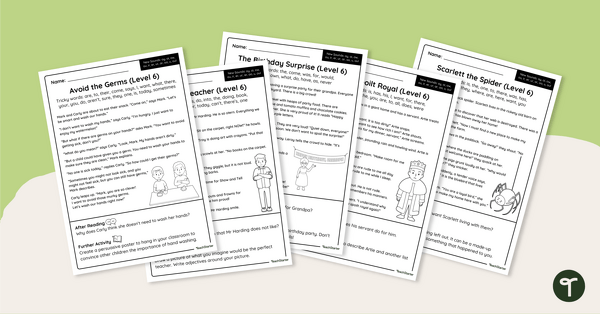
Level 6 Decodable Readers - Worksheet Pack
A set of one-pager worksheet versions of the texts from our Level 6 decodable readers.
- Plus Plan

Bake Off! - Decodable Reader (Level 5)
Develop confident, successful readers with this phonics-based, printable decodable book.